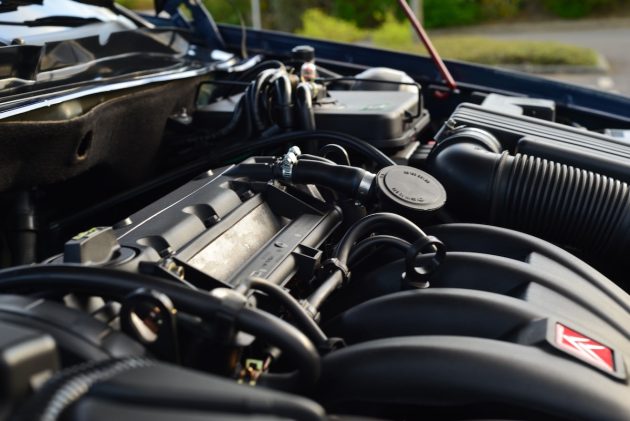Sway bars help with body roll and handling. Understanding car performance can help preserve these parts for years.
For generations, the internal combustion engine has been a marvel of engineering ingenuity. To create and sustain one’s power, it relies on rapid ignition systems to propel its mechanical components into action.
The key component in this process is spark plug technology, which ignites the fuel-air mixture in the cylinder chamber with tremendous speed and energy efficiency, thus sparking combustion and harnessing kinetic power for vehicle propulsion.
Whether you’re new to classic car parts or an experienced hobbyist, understanding how your vehicle’s ignition system works and maintaining its components are essential to keeping your ride running smoothly.
In this blog post, we will explore the function and maintenance of classic car ignition systems, their components, and the diagnosis of any issues that can arise along your journey.
Types of Ignition Systems in Classic Cars: From Points to Electronic Ignitions
Classic cars can take you back in time with their sleek designs and powerful engines, but what about their ignition systems? In the early days, point ignition systems were the norm, but as technology progressed, electronic ignitions became more common.
Point ignition systems relied on physical contact points within the distributor to create a spark, while electronic ignitions used sensors and a control module to produce the spark.
There are also variations within each type of system, such as capacitive discharge ignition and magnetic pulse ignition.
Whether you’re a classic car enthusiast or just curious about the evolution of automotive technology, exploring the different types of ignition systems in classic cars is a fascinating journey.
Components of an Ignition System: Spark Plugs, Distributors, Coils, etc.
The ignition system is the beating heart of any automobile. It ensures that the car ignites properly, ultimately powering the engine. The key components of an ignition system are the spark plugs, distributors, coils, and other related parts.
Spark plugs provide the spark necessary to initiate combustion, while distributors ensure that this spark is delivered to the correct cylinder at the correct time.
The coils, on the other hand, amplify the voltage from the battery to ensure that the plugs receive enough power to ignite the fuel in the engine.
Overall, the ignition system is a complex and vital part of any car, requiring all of its components to work in perfect harmony.
Troubleshooting and Maintenance Tips for Your Classic Car’s Ignition System
Owning a classic car is a dream come true for many, but maintaining it can be a daunting task. One of the most critical components of your classic car is its ignition system, which is responsible for starting the engine and keeping it running smoothly.
Over time, wear and tear can cause problems with the ignition system, such as misfires or failure to start. Troubleshooting and maintaining your classic car’s ignition system can save you time, money, and frustration.
Regular maintenance techniques like cleaning and checking the spark plugs, points, and condenser can make a noticeable difference in the performance of your vehicle.
This article provides essential tips for troubleshooting and maintaining your classic car’s ignition system, ensuring you can keep your prized possession in top condition for years to come.
Choosing the Right Parts for Your Classic Car’s Ignition System
For classic car enthusiasts, there’s nothing quite like the thrill of driving a vintage vehicle. Whether you’re rocking a classic Mustang or a timeless Chevy pickup, there’s just something about the roar of an engine from yesteryear that speaks to the soul.
However, with great vintage power comes great responsibility, and nothing is more important than ensuring your ignition system is running smoothly.
Choosing the right parts for your classic car’s ignition system can be a daunting task, but it’s essential to keep your vehicle running at its best.
By doing your research and selecting the right components, you can ensure your classic ride is ready to hit the open road for years to come.
The Benefits of Upgrading to a Modern Electronic Ignition System
When it comes to maintaining the health and performance of your vehicle, upgrading to a modern electronic ignition system can make all the difference.
Gone are the days of traditional breaker-point ignition systems that can quickly wear out and cause numerous issues with your engine’s timing and efficiency.
With a modern electronic ignition system, you can expect smoother starts, more reliable performance, and increased fuel economy.
Plus, electronic ignition systems also allow for more precise timing adjustments and can even help extend the life of your engine by reducing wear and tear.
Overall, investing in a modern electronic ignition system is a smart choice for any vehicle owner looking to maximize their vehicle’s potential and improve their driving experience.
In conclusion, when it comes to classic car parts, an ignition system is an essential part, and understanding how they work, the different types, and their respective components can help you determine what’s right for yours.
With the right knowledge and a bit of care for quality parts, your classic car’s ignition system will continue to stay in good condition for many years!

